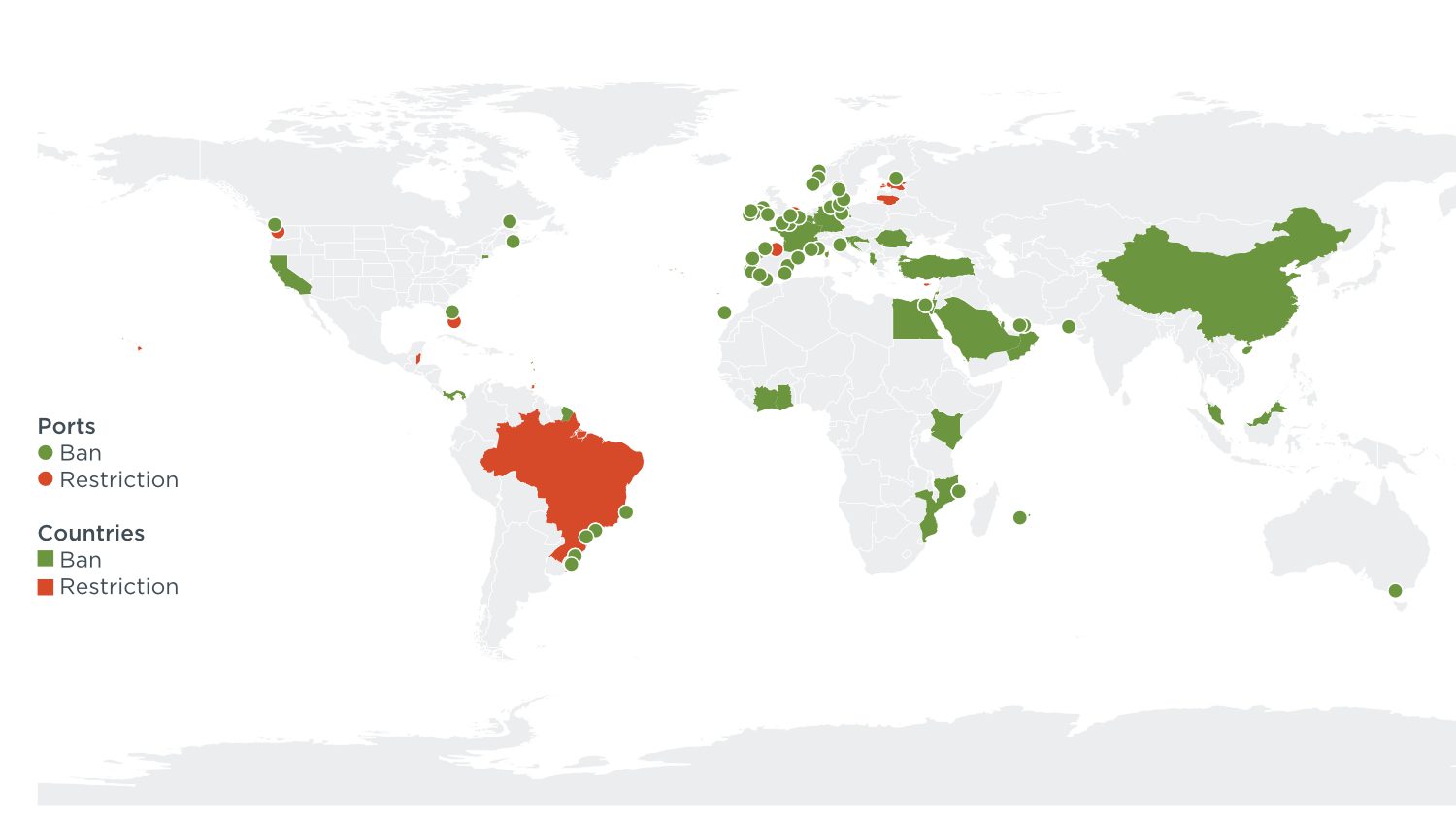Global scrubber washwater discharges under IMO’s 2020 fuel sulfur limit
Policy update
Global update on scrubber bans and restrictions
This paper updates a review of countries and ports that have implemented measures restricting the use of scrubbers that was first done as part of our global assessment of scrubber washwater discharges in 2021. It details where and how the rules apply, and the supplementary spreadsheet attached below contains detailed descriptions of the bans and restrictions. A “ban” is a prohibition on any washwater discharges or bleed-off water from scrubbers and a “restriction” means the use of scrubbers is allowed only if certain criteria are met.
The author details 93 measures that have been implemented in 45 countries (see figure), and 86% of these measures are bans rather than more limited restrictions. In the 14% of measures where a restriction is applied, the limitations vary. Additionally, 64% of the bans are focused on open-loop scrubbers or washwater discharges from open-loop scrubbers. Unsurprisingly, given that almost half of the bans and restrictions are implemented by a port, port areas are the most common geographical scope, 58%. These actions by ports show the potential to go beyond International Maritime Organization (IMO) and national regulations to protect against the water pollution that scrubbers produce.

Figure. Bans and restrictions on scrubbers by countries and ports that were announced as of February 2023. *This map is presented without prejudice as to the status of or sovereignty over any territory, the delimitation of international frontiers and boundaries, and the name of any territory, city, or area.
Attachments
Scrubbers_supplemental
